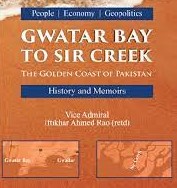Title of Book: Gwatar Bay to Sir Creek; The Golden Coast of Pakistan (History and Memoirs)
Author: Vice Admiral (Retd) Iftikhar Ahmed Rao HI(M)
City of Publication: Fazleesons (Pvt) Ltd Karachi under IPS (Inst. of Policy Research) Islamabad.
Year of Publication: 2022
ISBN: 978-969-448-810-3
Price: PKR 2000/-
Pages: 337
The author, Vice Admiral (Retd) Iftikhar Ahmed Rao HI(M) is an ex-naval officer with thorough background knowledge in maritime affairs. He is also the author of the book “Elements of Blue Economy” published in 2020, encompassing all essentials elements of maritime sector and is considered as a reference document in maritime segment in Pakistan.
The book “Gwatar Bay to Sir Creek: The Golden Coast of Pakistan; History & Memoirs” is covered in three sections with 15 chapters. The first part, “Makran – A Journey Through History”, the author explores the west coast of Pakistan, highlighting its natural beauty and potential tourism industry it can generate. While describing the history, author in a very chronological order narrates that how over the centuries region has been influenced by rulers like Alexander the Great, ancient Hindus, Arab and Central Asian Muslims, Mongols and later Baloch tribes who established the Khan of Kalate dynasty and later Makran state in 18th century.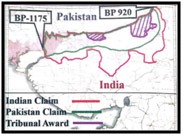
The author in detail discussed about the true ownership of Gwadar port; being at that time part of State of Makran. The city and its port had a rough political history between the Khan of Kalate and Sultanate of Oman in the late 18th century. In 1784, then Khan of Kalate provided refuge to Omani Sultan, Sultan bin Ahmed seeking for asylum after the conflict over the throne within royal family. As a gesture of goodwill, locally called “mahmannawazi”, Khan of Kalate shared Gwadar half of revenue as maintenance allowance, till he returned back to Oman in 1792. The British East India Company, who by that time became a strong political and military power in Indian Sub-Continent in order to safeguard their own interest in the region used their influence and allowed Oman to control Gwadar port by entering into various agreements. The British by these agreements bounded Sultan of Oman not to accede any part of Oman to anyone except British. After independence in 1947, Pakistani successive governments attempted to reclaim the port through diplomatic negotiations with Oman and the British. Pakistan acquired Gwadar on 08 September 1958, paying around 2,700.00/- British pound to the Sultan of Oman.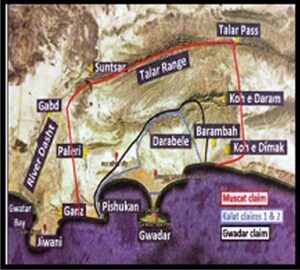
In second part of the book, “Bracing the Challenges-Memoirs”, the author shares his experiences as a young naval officer in the 1970s coastal belt of Makran, and later as helicopter pilot highlighting the region’s geography, socio-economic, and cultural heritage. After independence, Pakistan’s coastal belt lacked economic development and a strong naval presence due to landward-looking mentality of decision makers. The navy on its part, apart from building strong naval set-up in region, also played a significant role in community services, developing high-standard academic institutes and a state-of-the-art hospital. As author rightly narrates navy development in coastal belt from infancy to a formidable force in following words
“epic things start from humble beginnings, even as you move to greater heights, pay respect to your beginnings”
The chapter Makran Coastal Highway gives details about 653-kilometer road connecting Karachi to remote coastal cities in region in order to bring economic activities in coastal belt. Its construction began in the early 2000s. The highway offers stunning views of the Arabian Sea, rugged cliffs and serene beaches including famous Kund Malir Beach, Hingol National Park, Princess of Hope rock formation, Hammerhead and Buzi pass.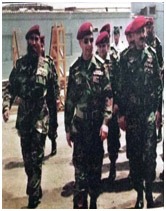
The last few chapters under the overall heading of “Command and Humility” discusses raising the new Coastal command in navy and how it attributed to overall defence of the coast line stretching at west from Jiwani in Balochistan to the east in volatile Sir Creek area in Sindh. As author rightly says that
“every organization need to review their set-up as things change due expansion or change in the operational environment”.
The book further highlights the beauty of the Sindh coast in east Pakistan, Manora Island, and the Arabian Sea while discussing the environmental imbalances caused by mangrove forest (the seventh largest in the word;) decline and threats to the unique Indus Delta biodiversity.
The chapter on Sir Creek, traces the land dispute between Sindh and Kutch states since 1907, digs into historical accords, the 1965 Run of Kutch conflict between
India and Pakistan and the UN Tribunal’s resolution in 1965. The author uses maps and authentic historical references to provide a clear account of the issue and Pakistan’s stance on it, making it accessible to even common layman.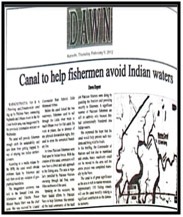
Author has dedicated the final chapter to the construction of marine canal by Pak Marines in 2005 in Sir Creek area. He said that the topic was very dear to his heart, as it related to construction of a canal to facilitate the local fishermen to safely navigate for fish-catching. The author being Commander Coast spearheaded the project. The canal, built by Pak Marines was constructed to access the fish-rich Uthanjodarya creek, which was difficult to access from the Pakistani side due to its marshy terrain. Pak Marines constructed the canal in marshy land in the scorching heat of August and September using only shovels. Later, this effort by navy also received national appreciation on national media appraisal as published in Dawn newspaper on February 09, 2012, as under
“Canal to help fishermen avoid Indian waters”
This book is an amalgamation of multiple disciplines related to social science subjects i.e. history, cartography, topography, anthropology, sociology, geography, defense and strategic studies, international relations, economy and law. The author’s extensive bibliography showcases his research, making it a valuable reference for future studies. This book should be essential read compulsory read for development policy practitioners, for all the diplomats and all the commercial stakeholders who are looking to invest in Pakistan’s coastal areas.

